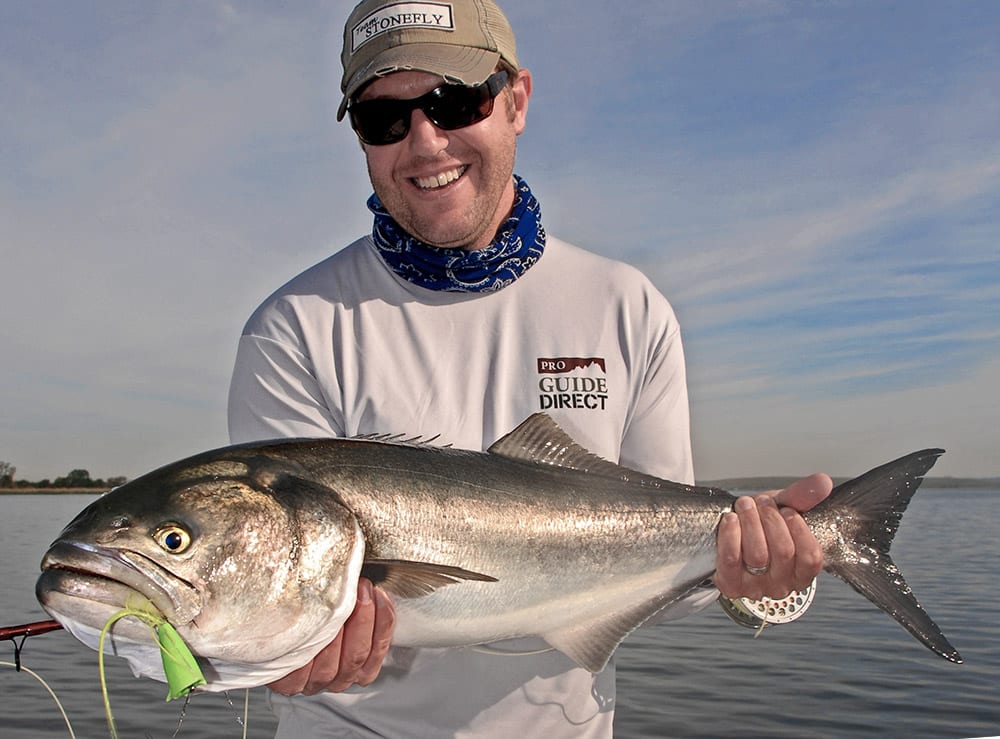
“There were two fins poking out of the water, no three. “Man, they look just like bonefish,” said me friend David. As we inched closer, we could make out a few more bluefish milling about in an impossibly shallow mud flat.
“What should we throw at them?” David asked. “Grab that one,” I said, pointing to a 9-weight rod rigged with a bright yellow floating, weight-forward line and a large foam popper.
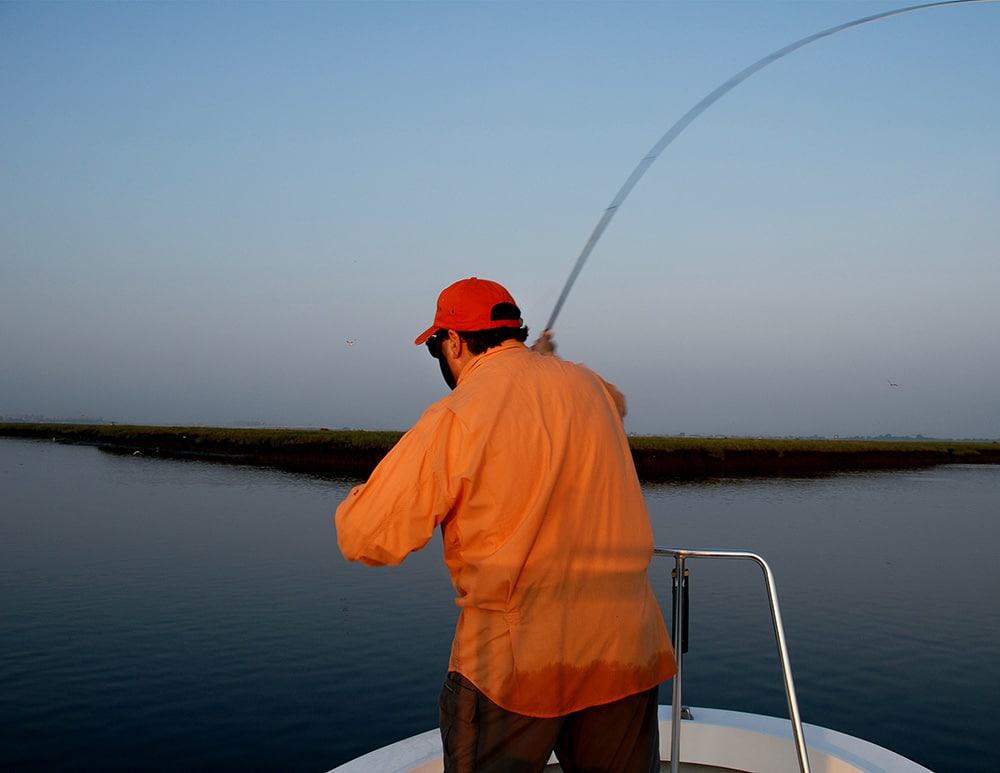
As I quietly inched the boat closer with a push pole, and David striped line out, both of our heart rates increased exponentially. “Okay, let ’er rip.” With two false casts, David rolled out 80 feet of line, dropping the popper almost on top of a tail. The water boiled as the fish spooked. “Let it sit for a second,” I instructed. “Okay, now strip!”
One hard pull caused the popper to gurgle and spit water, then, KABOOM! With a savage strike that sounded like someone dropped a cinderblock from the heavens, a big bluefish claimed the popper. Some aimless thrashing followed, but then the fish tore off, performing a series of acrobatic jumps that forced David to dance to keep from stepping on the fly line. He didn’t, and soon we were holding up 40 inches of toothy awesomeness for a quick photo, before setting the brawler free to terrorize more baitfish.
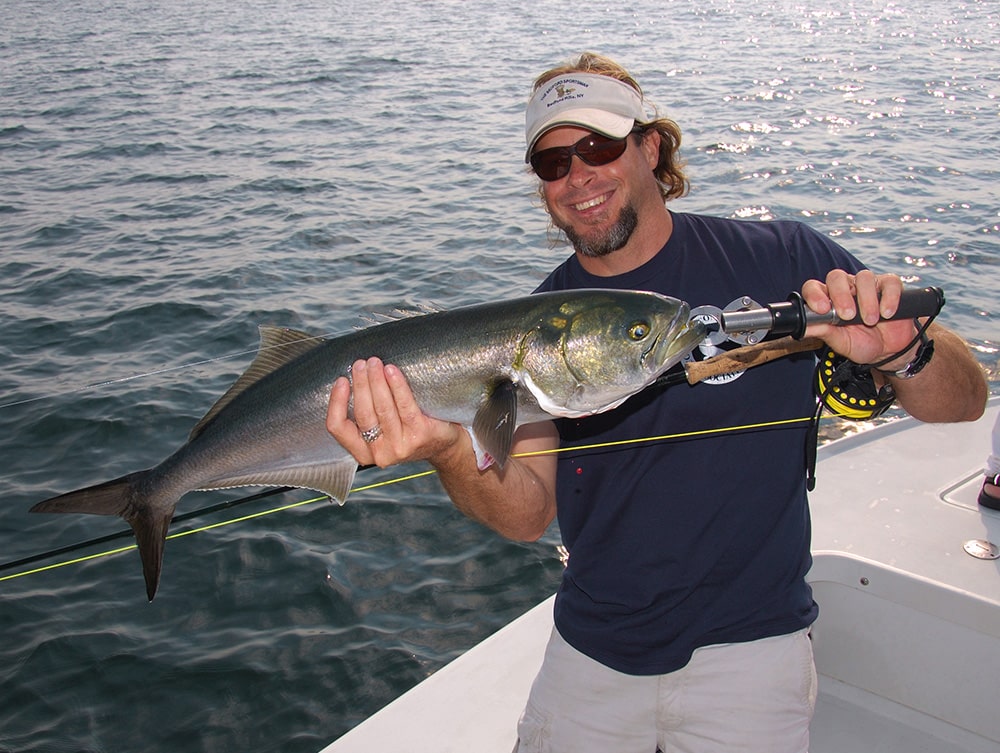
Formidable Predators
Bluefish are underappreciated and underutilized, especially the ones that frequent estuarian flats, which may be the perfect target for saltwater flyfishers in the Northeast and mid-Atlantic.
Back in 1953, one of the founding directors of Woods Hole Oceanographic Institute described bluefish as “perhaps the most ferocious and bloodthirsty fish in the sea, leaving in its wake a trail of dead and mangled mackerel, menhaden, herring, alewives, and other species on which it preys.”
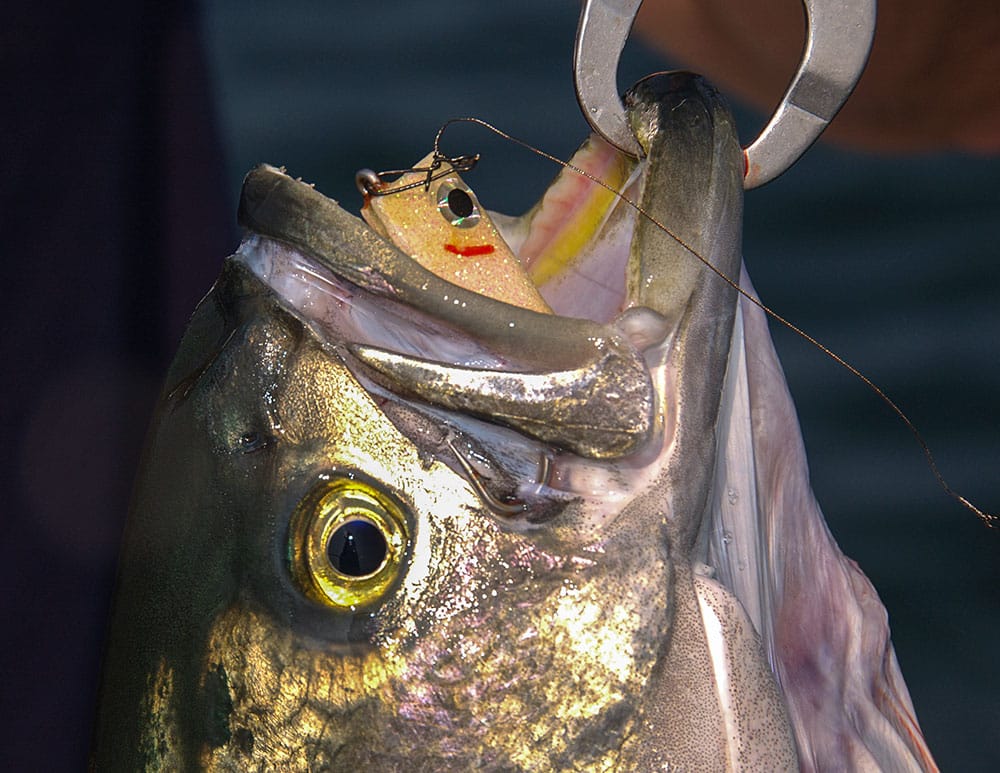
Indeed, bluefish are aggressive, mean animals with a set of teeth you do not want to get your fingers near. They look every bit the part of an apex predator: the long, streamlined body, menacing yellow eyes, and piranha-like choppers. Violent and voracious, they almost always smash a fly cast in their vicinity, usually in spectacular fashion. Once hooked, they fight with surprising strength and speed, often leaping out of the water.
Blues show up in a variety of habitats. You find them both deep and shallow, along the Atlantic coast. And they also frequent bays and estuaries, often venturing into some really skinny water. But perhaps what they are most notable for is their blitzes, their ferocious attacks on schooling menhaden, sand eels, bay anchovies, or anything else that swims for that matter, including their own young. For fly anglers, however, stakling big bluefish in the shallows, where they tail like a bonefish, is hard to beat.
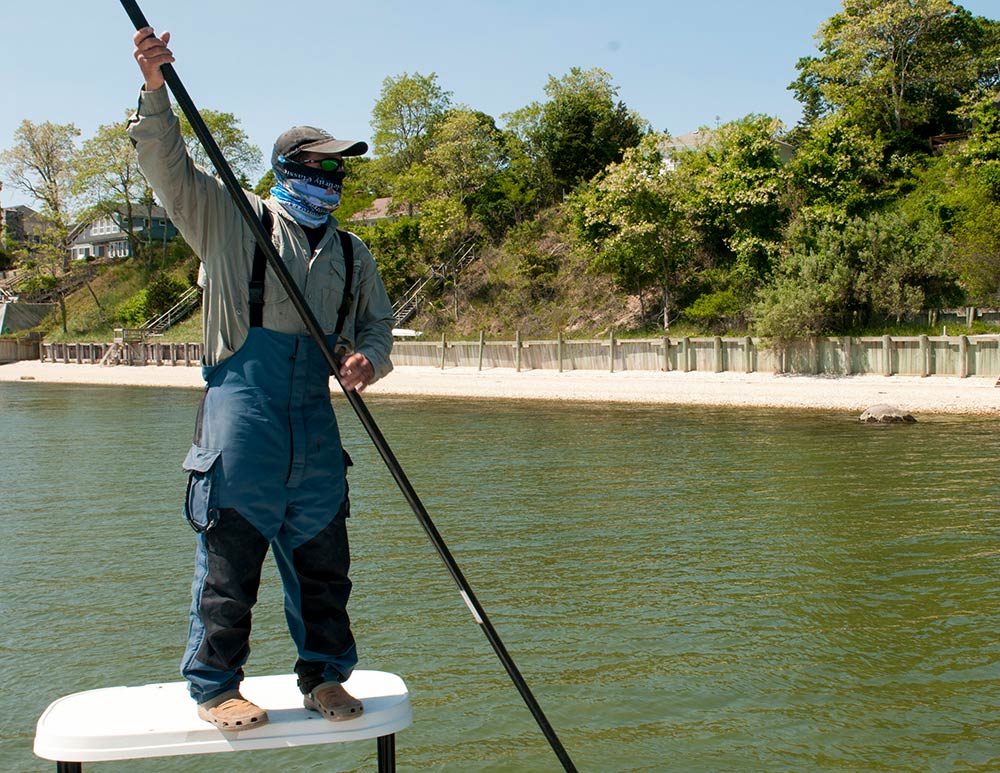
Tailing Blues
Without a doubt, large tailing bluefish are a spring event in New York, New Jersey and Massachusetts. The exact time varies from year to year, but we generally see it in May, sometimes early June. These “racer” blues (they are usually long and skinny, presumably from their long trip here) generally show up from south Jersey to Cape Cod.
“It is super cool when they get up in that skinny stuff and tail,” says Capt. Danny Reich of Jamaica Bay, New York. “Why they do it is a mystery.” If it’s clear out, you can see five or six of them, playing follow the leader with their tails poking out of the water. Then, for no apparent reason, they’ll break off and swim in a circle.
“They clearly aren’t up there eating,” notes Capt. David Blinken of Eastern Long Island, “because they’re often very hard to feed. And every one of these fish we’ve filleted appears to have an empty stomach.” Most would point to such behavior as some sort of spawning ritual, but the science on bluefish is clear, they spawn offshore in the summer and early fall months. Whatever the reason, it’s cool to see blues daisy-chaining. And watching it unfold before your eyes, and getting to cast your fly at such targets is sublime.
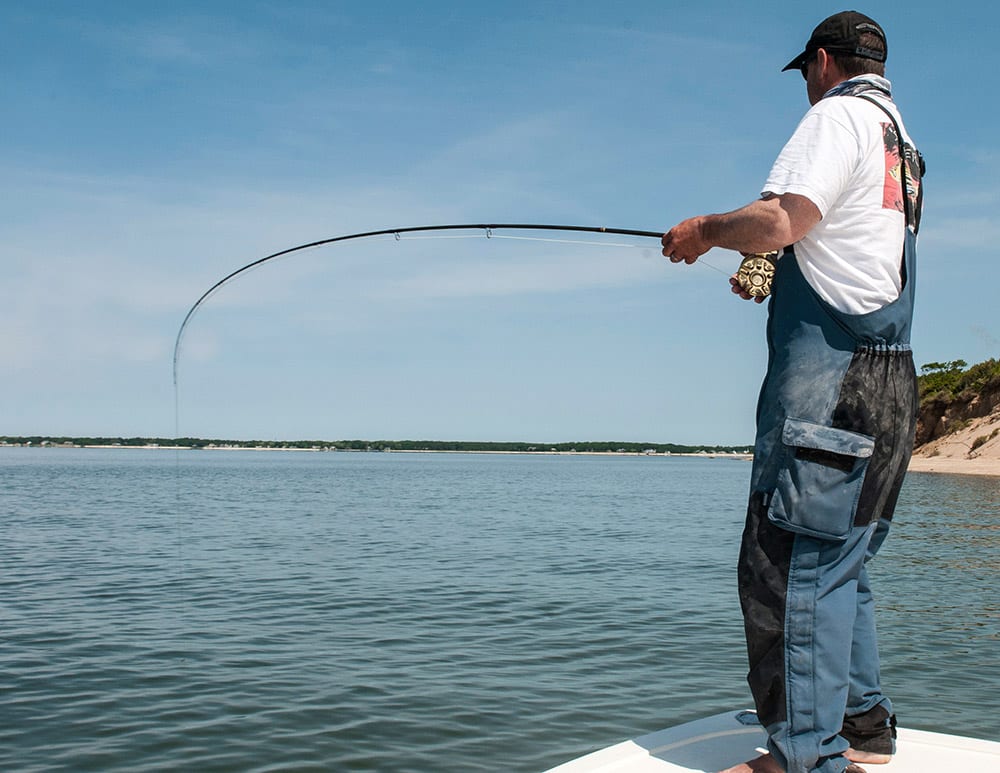
Proper Gear
“We fish mostly 9-weights, sometimes 10-weights,” says Reich, “all with floating lines.” Not just because you don’t want the line to sink in that shallow water, but also to quickly pull that line off the water and make another cast to the front of the school if the initial presentation is unsuccessful. When it comes to reels, you better have a good anodized aluminum one with a quality drag. I’ve seen these fish smoke lesser options.
“Getting these tailing fish to eat ain’t easy says Blinken,” uncharacteristic of bluefish, which are usually super aggressive and will grab whatever you throw in front of them. “You really have to annoy them into grabbing the fly,” adds Reich. “Big Lefty’s Deceivers in white, yellow or other bright colors will work if you manage to cast ahead of the school and pull it across the lead fish’s face,” explains Blinken. “But it’s hard to beat a popper for this kind of fishing.”
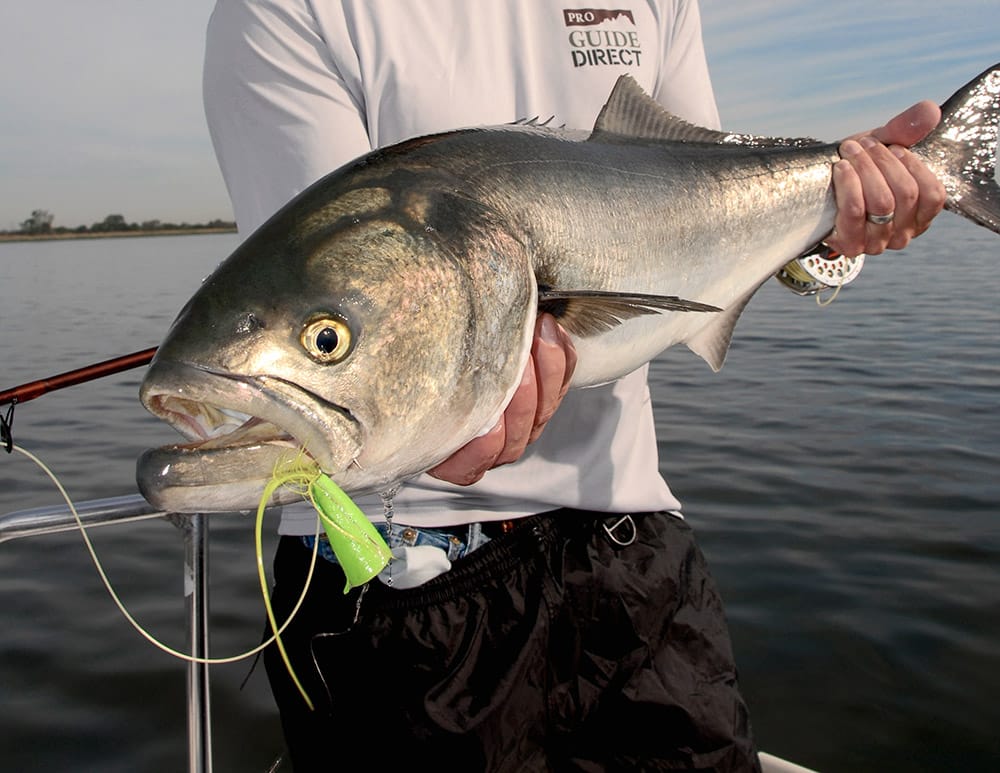
Nothing annoys bluefish and promotes an aggressive response like a popper. We use medium Rainy’s Saltwater Popper heads on 4/0 stainless, long-shank hooks tied with a bit of feather or bucktail. While blues tend to favor bright colors like chartreuse or yellow, color doesn’t really matter much, it’s all about the noise. Get the popper near that lead fish, strip it enough to create some noise, and one or two fish will break ranks and make a beeline for it. And the strikes are generally breathtaking.
There are those who will spend precious fishing time tying tapered leaders, but you don’t really need that for this type of fishing. We use straight 20-pound fluorocarbon, and no longer than 6 feet. Any longer and it becomes hard to turn over that big popper.
Bluefish, especially those shallow-water tailers, are a fly fishers dream. If you live in the Northeast or mid-Atlantic region, do some scouting in your neck of the woods this spring. And go rigged and ready to throw a fly when you find ’em.









